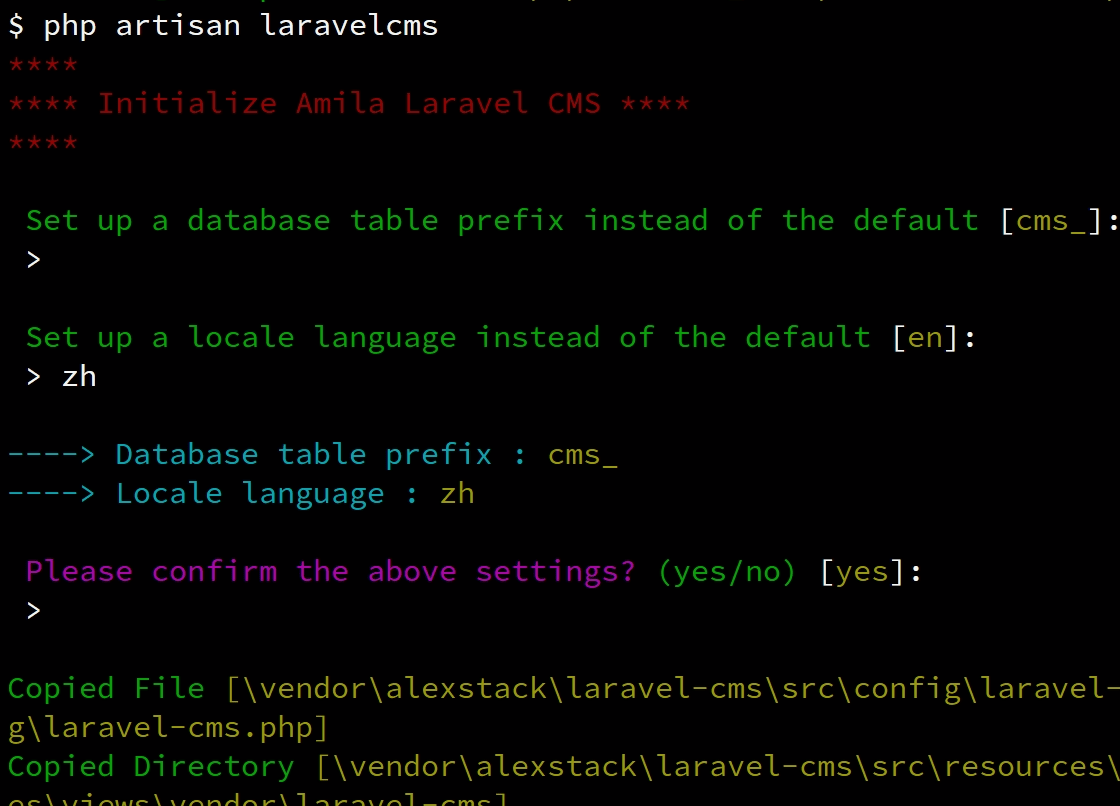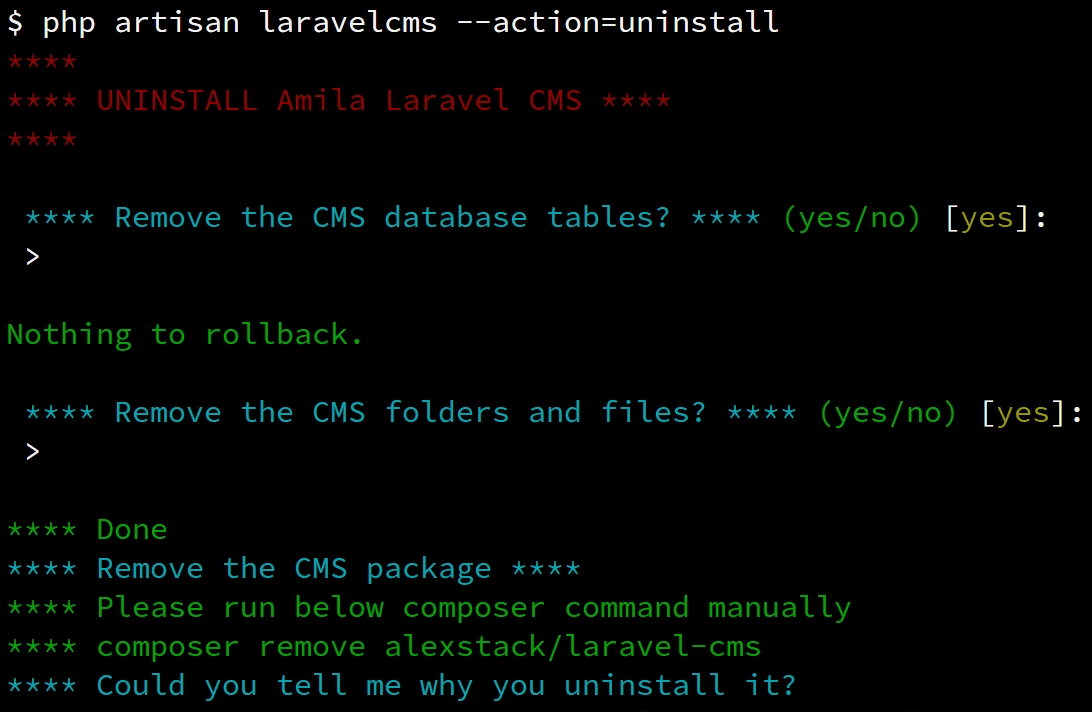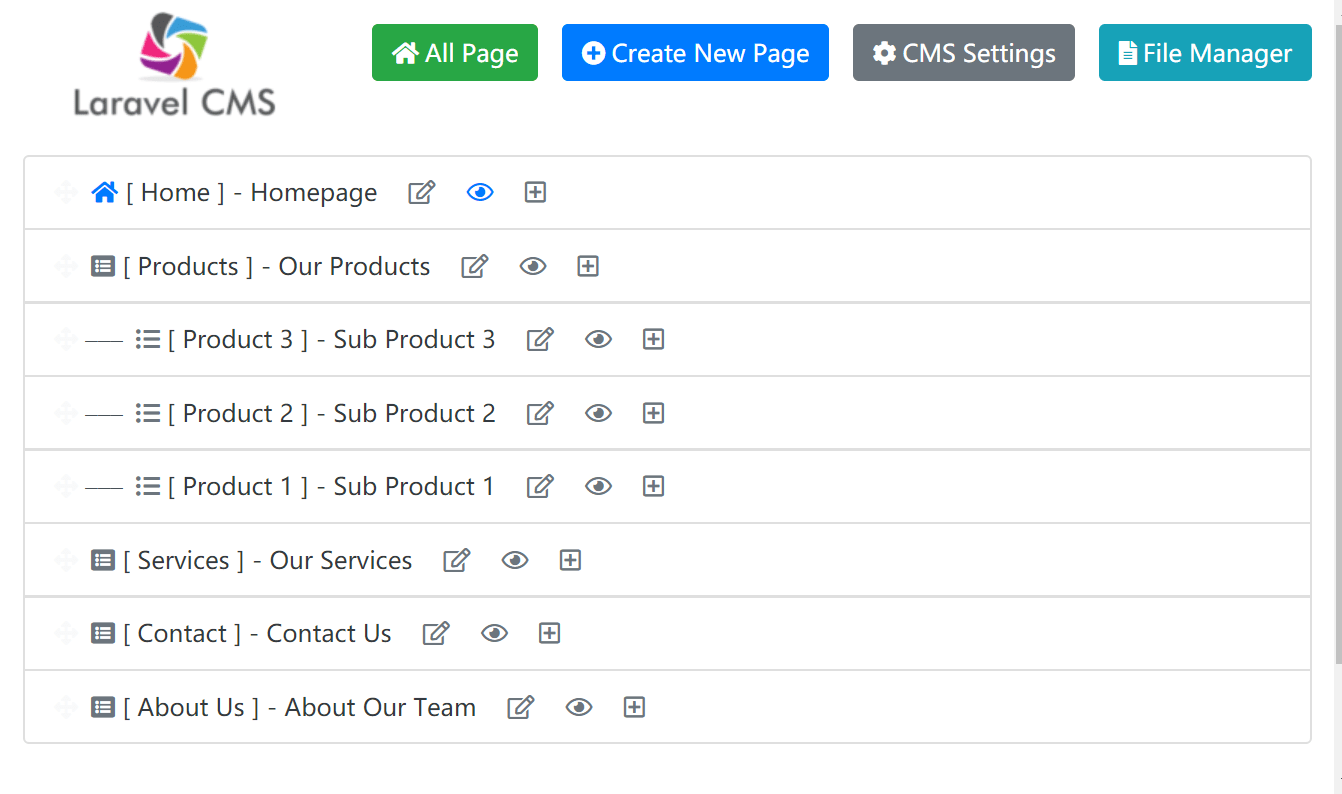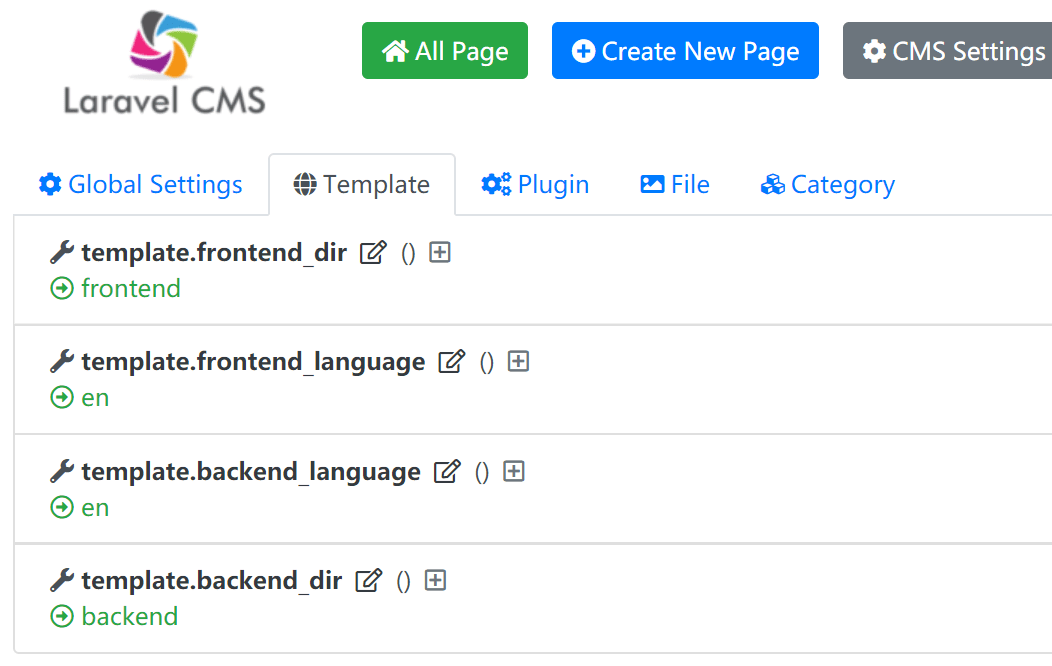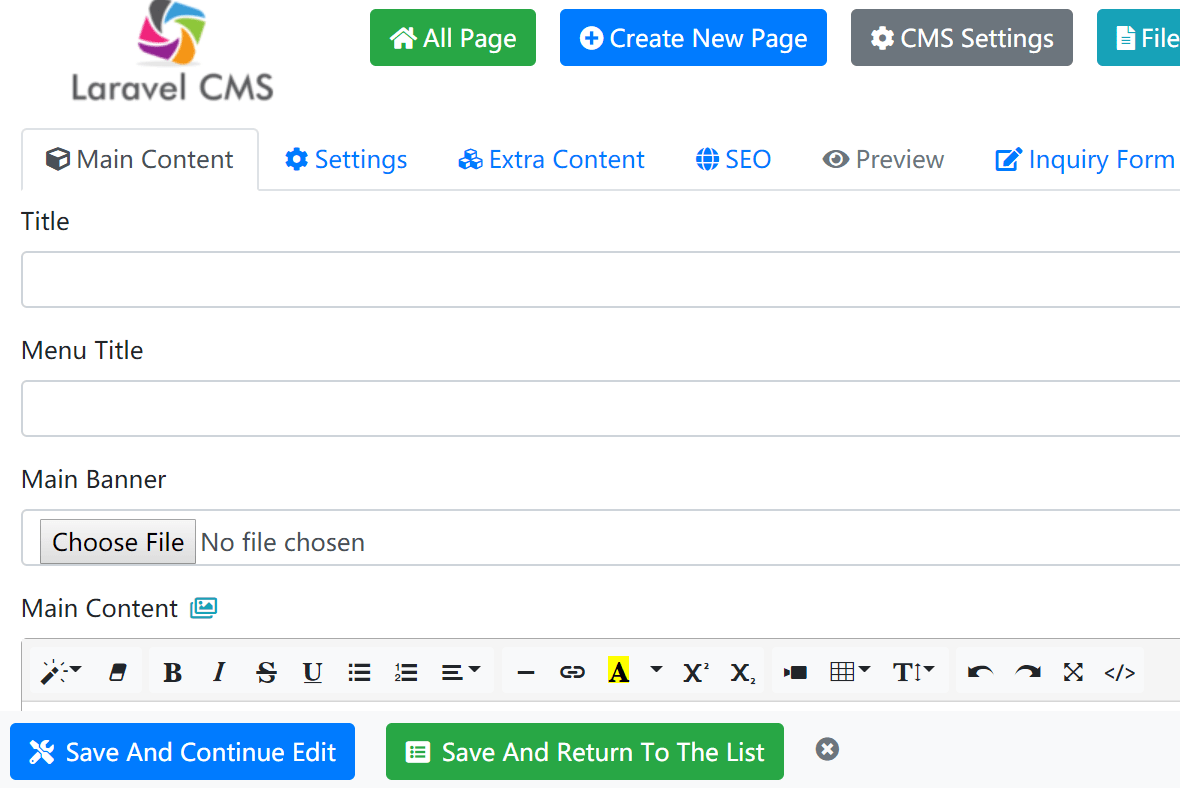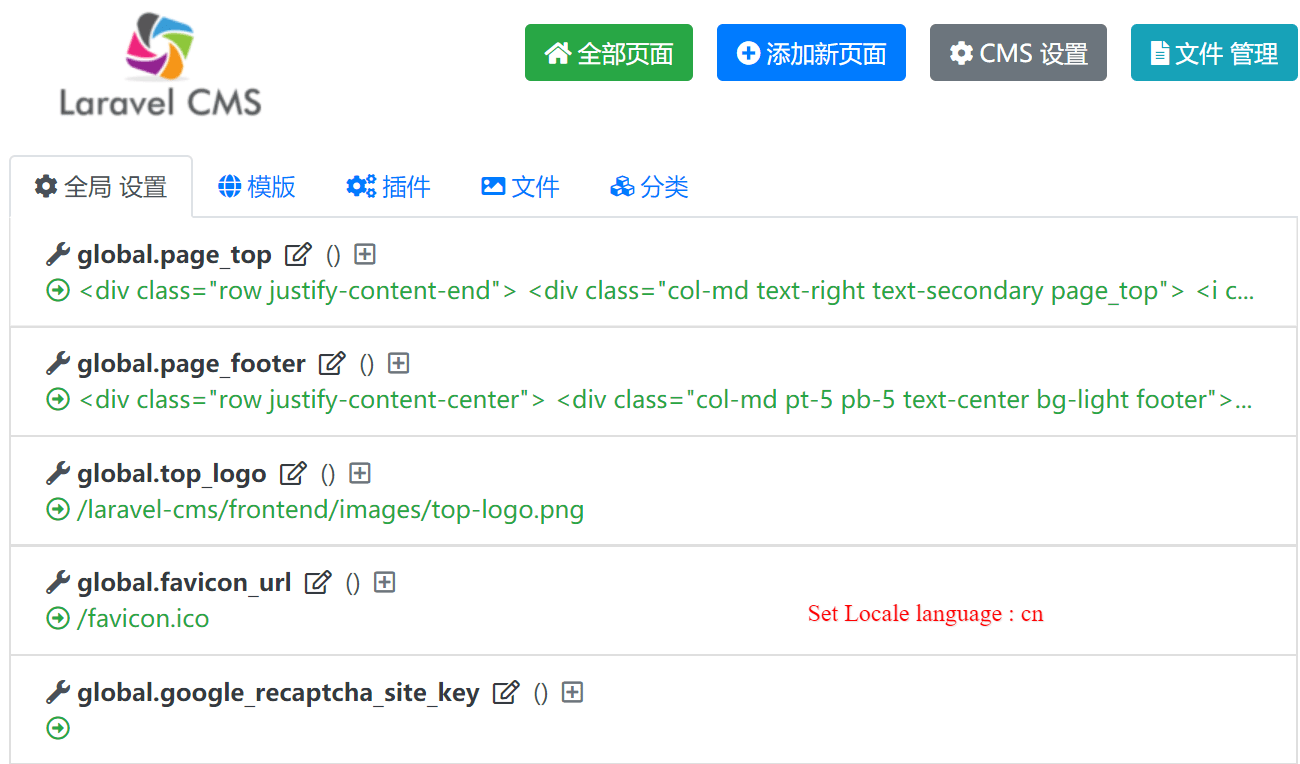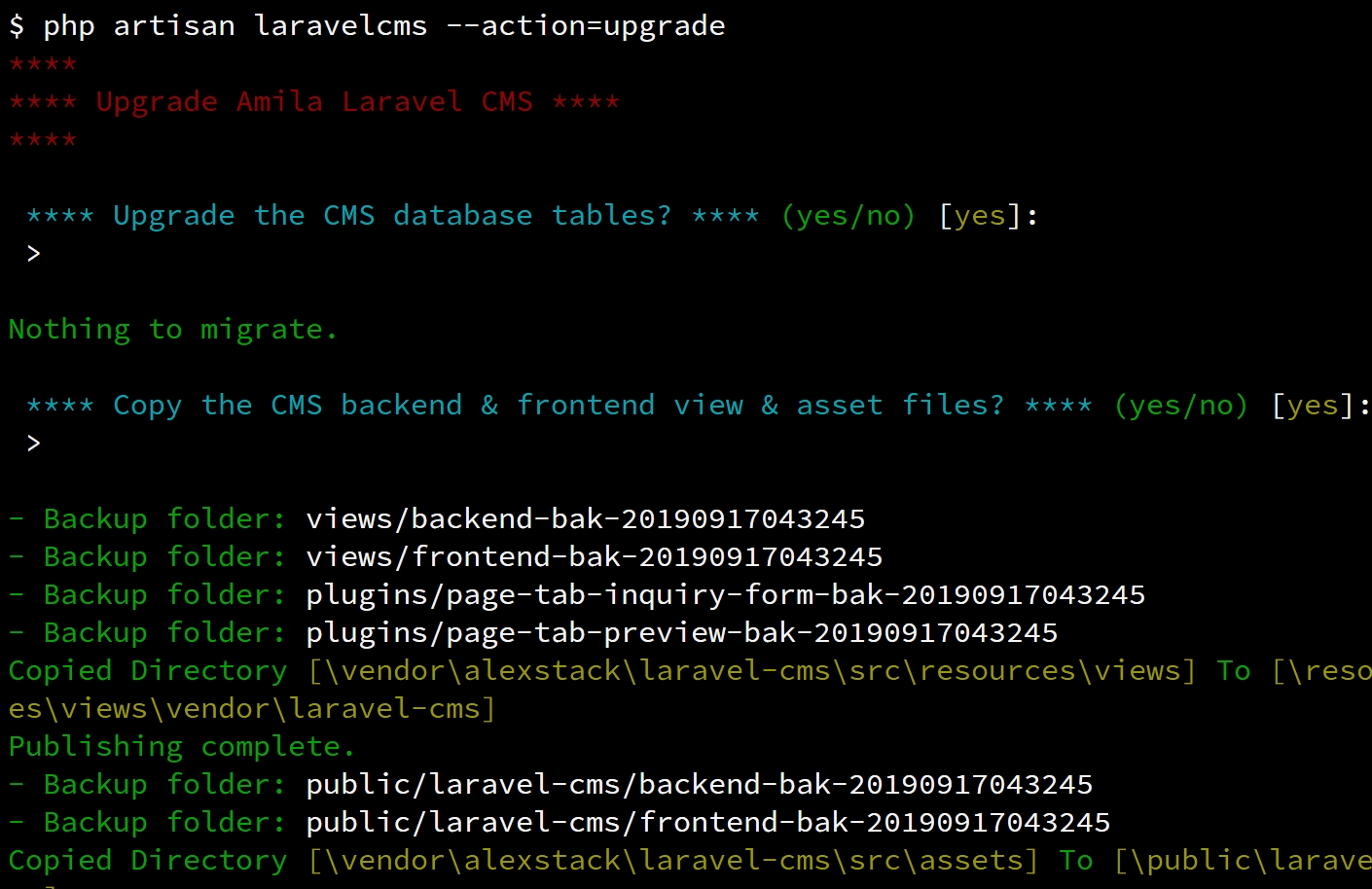alexstack / laravel-cms
Simple Bootstrap Laravel CMS. Can integrate to any existing Laravel project. Only add few database tables with prefix, not effect your existing database tables. Support Laravel 8.x & 7.x & Laravel 6.x & Laravel 5.x - Amila Laravel CMS
Installs: 4 294
Dependents: 5
Suggesters: 0
Security: 0
Stars: 106
Watchers: 7
Forks: 27
Open Issues: 1
pkg:composer/alexstack/laravel-cms
Requires
- php: >=7.0.0
- ext-gd: *
- ext-json: *
- alexstack/google-recaptcha-to-any-form: ^1.4
- intervention/image: ^2.4
- intervention/imagecache: ^2.3
- laravel/framework: >=5.5
- laravel/ui: >=1.0
- laravelcollective/html: >=5.5
- overtrue/pinyin: ^4.0
This package is auto-updated.
Last update: 2025-12-25 08:09:12 UTC
README
- Free, open-source Simple Bootstrap Laravel CMS, support Laravel 8.x or 7.x or old Laravel 6.x & 5.x, support MySql & MariaDB & PostgreSQL
- Can integrate with any existing Laravel project, install as an individual Laravel package
- Only add a few database tables with a prefix, not effect your existing database tables.
- You can easily custom the database table names, the page URL path(route) and the template(theme)
- Build-in Website is ready after install. Easy to use, simple enough but flexible.
- Basic Laravel 8.x/ Laravel 7.x /Laravel 6.x / Laravel 5.x syntax and blade template, no need to learn a "new language"
How to install for an existing Laravel project
- Support Laravel 8.x & Laravel 7.x & Laravel 6.x & Laravel 5.x
// Make sure you already have laravel installed and configured the database in the .env // Go to your laravel project folder and install it via composer // Initialize the CMS (You can set up database table prefix and locale here) composer require alexstack/laravel-cms && php artisan laravelcms // Now you can access the cms frontend site: http://yourdomain/cms-home // Access the backend with the FIRST USER of your site: http://yourdomain/cmsadmin // Note: The default admin is the first user in your laravel database(user id = 1 )
How to set up a brand new CMS website with the latest Laravel
- It's good for a local testing, it's support the latest Laravel version
// Step 1: Install Laravel to folder cms composer create-project laravel/laravel cms && cd cms && composer require alexstack/laravel-cms // Step 2: install CMS in silent mode php artisan laravelcms --locale=en --table_prefix=cms_ --silent=yes // Note: it will ask for database settings if you did not change the default .env file // Note: it will automatically run a web server on port 9321 for your project // Step 3: Now, you can access your cms backend via http://127.0.0.1:9321/cmsadmin/ // Default admin username: admin@admin.com password: admin321
How to uninstall
// Uninstall the CMS
php artisan laravelcms --action=uninstall
Demo & Documents
Screenshot of the output of install command
Screenshot of the output of uninstalling command
Screenshot of the admin panel
Set locale language to cn instead of en
Error "Route [login] not defined" while access the backend /cmsadmin/
- This means you did not install Laravel Auth(User system)
- Can be fixed by the below commands:
// Laravel 6.x & Laravel >= 7 & Laravel >= 8 composer require laravel/ui && php artisan ui vue --auth // Laravel 5.x, run blow command instead php artisan make:auth && php artisan migrate
- After install the Auth package, please register the first user as the admin
How to log into the backend /cmsadmin/?
- Amila CMS use your existing Laravel user system
- You need to log in with the FIRST USER of your site (user_id = 1)
- You can add more admin users by change the admin_ary in config/laravel-cms.php
- If you don't have any existing user, then register a new one via http://your-domain/register
Why the uploaded image can not display (404 error)
- You can fix it by creating a storage public link
- php artisan storage:link
- eg. The public/storage should link to ../storage/app/public, if the public/storage is a real folder, you should remove/rename it and run "php artisan storage:link" to set up the link.
Custom the cms route in config/laravel-cms.php
- homepage_route: This is the frontend homepage. By default it is /cms-home, you can change it to / then remove the existing / route in the routes/web.php
# Change homepage_route to / in config/laravel-cms.php 'homepage_route' => env('LARAVEL_CMS_HOMEPAGE_ROUTE', '/'), # Remove the existing / route in the routes/web.php // Route::get('/', function () { // return view('welcome'); // });
- page_route_prefix: This is the frontend page prefix. By default it is /cms-, it will match path like /cms-*. You can change it to a folder like /xxx/ or anything like xxx-, eg. Page- Article-
'page_route_prefix' => env('LARAVEL_CMS_PAGE_PREFIX', '/Article-'),
- admin_route: This is the backend admin page route, By default, it is /cmsadmin
'admin_route' => env('LARAVEL_CMS_BACKEND_ROUTE', '/admin2019'),
- After changing the route, you will need to run below commands:
php artisan laravelcms --action=clear
Display an image with different size in the frontend Laravel .blade.php template file
- .blade.php Code examples:
@if ( isset($file_data->main_image) ) <img src="{{$helper->imageUrl($file_data->main_image, '1000') }}" class="img-fluid" /> <img src="{{$helper->imageUrl($file_data->main_image, '500') }}" class="img-fluid" /> <img src="{{$helper->imageUrl($file_data->main_image, 'w', '150') }}" class="img-fluid" /> <img src="{{$helper->imageUrl($file_data->main_image, '100', '100') }}" class="img-fluid" /> <img src="{{$helper->imageUrl($file_data->main_image, 'original', 'original') }}" class="img-fluid" /> @endif
- You can get an image with any width and height. or use the original image.
- Available image variables: $file_data->main_image, $file_data->main_banner, $file_data->extra_image, $file_data->extra_image_2
- The CMS will resize the image at the first time, then will directly use it afterwards.
How to change the CSS & JS assets of the frontend?
- The asset files located at public/laravel-cms/<theme_name>, eg. public/laravel-cms/frontend/css
- Example code to load css or js:
<link rel="stylesheet" href="{{ $helper->assetUrl('css/main.css') }}">
...
<script src="{{ $helper->assetUrl('js/bottom.js') }}"></script>
- The default template file will load CSS and js asset with last_modify_time parameter to avoid cache from the browser
How to set up a different template theme from the default?
- Copy the default theme folder /resources/views/laravel-cms/frontend to /resources/views/laravel-cms/new_theme
- Change the frontend_dir in the settings page to new_theme
- Default value in config/laravel-cms.php
'template' => [ 'frontend_dir' => 'frontend', 'backend_dir' => 'backend', 'backend_language' => 'en', 'frontend_language' => 'en', ]
- run php artisan config:cache to load new config file
- Change template settings for the pages in the backend
- The css/js asset files will locate at public/laravel-cms/new_theme
Set default slug format and suffix for page SEO URL in config/laravel-cms.php
- You can change it in the settings page
- 'slug_format' can be from_title, id, pinyin
- 'slug_suffix' can be anything you want, empty means no suffix
'slug_format' => 'from_title', 'slug_suffix' => '.html', 'slug_separate' => '-',
Use your own PHP class / How to integrate your PHP code into the CMS
- One simple option is to implement a method from your own PHP controller/class by adding it into a cms page. Tutorial for it.
- Another option is to create a CMS plugin for your own project and use it for all pages. A tutorial is here. You can also publish the plugin if the feature can be used by other websites.
How to upgrade the CMS?
- Run below command in your Laravel project folder
- It will ask whether you want to copy the new view, asset and language files to your project
composer require alexstack/laravel-cms && php artisan laravelcms --action=upgrade
- Upgrade screenshot
ReactJS for backend All Pages list
- Laravel CMS use ReactJS for backend All Pages list, the ReactJS source code can be found here
- The compiled js file is here: /public/laravel-cms/backend/js/reactLaravelCmsBackend.js
- It can be switch to normal Laravel blade page by change the "react_js": true to false in the setting system.all_pages
What PHP versions do you support?
- Amila Laravel CMS passed the basic test on PHP 7.1, 7.2, 7.3, 7.4
Laravel versions support
- cms version >= 1.4.4, support all laravel version >= 6.0
- cms version <= 1.4.3: support Laravel 5.x, 6.x, 7.x, 8.x
- Please install version 1.4.3 if the laravel version is 5.x of an existing project
How to use PostgreSQL instead of MySql or MariaDB?
- Make sure the .env changed before run the install command line. An example:
DB_CONNECTION=pgsql DB_HOST=topsy.db.elephantsql.com DB_PORT=5432 DB_DATABASE=oktetra DB_USERNAME=oktetra DB_PASSWORD=the-postgresql-password
How to store & access files on AWS s3?
-
On AWS: Create a s3 bucket and enable it as a Static website hosting, allow all public access and set s3:GetObject Bucket policy, Create an IAM user for api use.
-
Laravel .env file, set below variables:
AWS_ACCESS_KEY_ID= AWS_SECRET_ACCESS_KEY= AWS_DEFAULT_REGION= AWS_BUCKET= FILESYSTEM_DRIVER=s3 AWS_URL=
-
composer require league/flysystem-aws-s3-v3 ^1.0
-
done
How to install laravel/jetstream or other ui instead of laravel/ui?
// Step 1: Install Laravel to folder cms composer create-project laravel/laravel cmsjet && cd cmsjet && composer require laravel/jetstream // Step 2: install jetstream php artisan jetstream:install inertia && npm install && npm run dev // Step 3: install CMS in silent mode composer require alexstack/laravel-cms && php artisan laravelcms --locale=en --table_prefix=jet_ --silent=yes // Step 4: Edit routes/web.php - Remove or comment Auth::routes(); - Change Route::get('/' to Route::get('/welcome' - Run command: php artisan laravelcms --action=clear // Step 5: Now, you can access your cms backend via http://127.0.0.1:9321/cmsadmin/ // Default admin username: admin@admin.com password: admin321
How to install it on HeroKu?
- Local: First, install at your localhost and make sure everything works fine
- Local: Create a github repository for the laravelcms folder. eg. cd cms && git init && git remote add origin https://github.com/xxx.git
- Local: Enable gd exif for heroku php: composer require ext-exif ext-gd
- On HeroKu: create a new app from this github repository, enable automatically deploy
- Local: to use Nginx/apache together with PHP, add a file named Procfile on folder cms with content below:
web: vendor/bin/heroku-php-apache2 public/
- HeroKu: add Dyno formation: web vendor/bin/heroku-php-apache2 public/
- HeroKu: add .env variables to settings -> Config Vars
- Done
License
- The Amila Laravel CMS is open-source software licensed under the MIT license.




